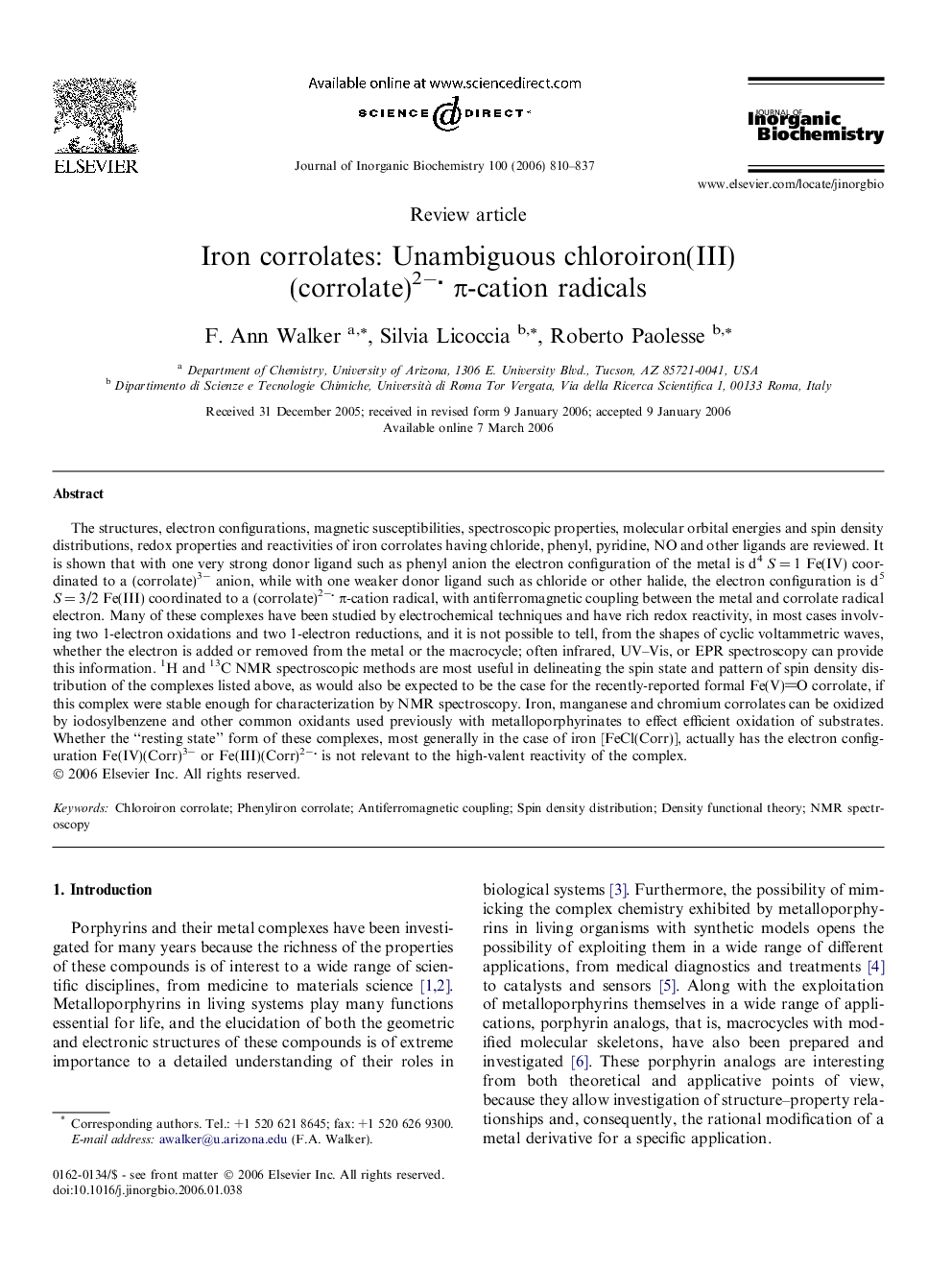| کد مقاله | کد نشریه | سال انتشار | مقاله انگلیسی | نسخه تمام متن |
|---|---|---|---|---|
| 1317665 | 976558 | 2006 | 28 صفحه PDF | دانلود رایگان |

The structures, electron configurations, magnetic susceptibilities, spectroscopic properties, molecular orbital energies and spin density distributions, redox properties and reactivities of iron corrolates having chloride, phenyl, pyridine, NO and other ligands are reviewed. It is shown that with one very strong donor ligand such as phenyl anion the electron configuration of the metal is d4S = 1 Fe(IV) coordinated to a (corrolate)3− anion, while with one weaker donor ligand such as chloride or other halide, the electron configuration is d5S = 3/2 Fe(III) coordinated to a (corrolate)2− π-cation radical, with antiferromagnetic coupling between the metal and corrolate radical electron. Many of these complexes have been studied by electrochemical techniques and have rich redox reactivity, in most cases involving two 1-electron oxidations and two 1-electron reductions, and it is not possible to tell, from the shapes of cyclic voltammetric waves, whether the electron is added or removed from the metal or the macrocycle; often infrared, UV–Vis, or EPR spectroscopy can provide this information. 1H and 13C NMR spectroscopic methods are most useful in delineating the spin state and pattern of spin density distribution of the complexes listed above, as would also be expected to be the case for the recently-reported formal Fe(V)O corrolate, if this complex were stable enough for characterization by NMR spectroscopy. Iron, manganese and chromium corrolates can be oxidized by iodosylbenzene and other common oxidants used previously with metalloporphyrinates to effect efficient oxidation of substrates. Whether the “resting state” form of these complexes, most generally in the case of iron [FeCl(Corr)], actually has the electron configuration Fe(IV)(Corr)3− or Fe(III)(Corr)2− is not relevant to the high-valent reactivity of the complex.
Journal: Journal of Inorganic Biochemistry - Volume 100, Issue 4, April 2006, Pages 810–837